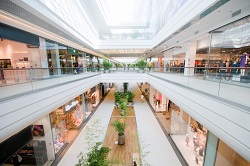Shopping centres – beacons for retrofit energy solutions
“Being the building type with the highest renovation rate and because of their constant modernisation, shopping centres offer the best opportunities to perform deep energy retrofitting,” explains Mr Roberto Lollini, coordinator of the project COMMONENERGY. The initiative has developed varied sets of solutions, with encouraging outcomes for people and the environment, as well as effective management and operational costs. To begin with, project partners carried out an EU shopping centre stock analysis and then identified main inefficiencies in terms of energy, comfort, operations and logistics. Following this, they defined shopping centres’ typical functional patterns – “the influence of stakeholders (owners/managers, tenants, customers) on energy figures and their interaction with the social context,” notes Mr Lollini. Solutions and support for deep retrofitting COMMONENERGY conducted analyses to determine retrofitting drivers that hold the most promise from a costs and benefits perspective. Throughout, the project team also accounted for related sustainability targets that make an impact across the board. As Mr Lollini points out: “for not only facility management and operational costs, but also customer experience, fundamental for retailers.” Working with, analysing and testing new and existing systems, the project introduced innovative technologies to improve internal comfort, harvest natural sources and reduce the energy demands of these buildings. One specific advance is a modular multifunctional climate-adaptive facade system, for which an advanced prototype is being evaluated in outdoor testing facilities. A second development is the greenery integration-in-building envelope. This involved sensitivity analysis of the ‘green wall’ performance to evaluate the impact of greenery on heat transmission through the facade. Lastly, COMMONENERGY made inroads with multifunctional smart coating materials, choosing four effective formulations for integration to the base paint. Comfortable and light – on the eyes and pocket Two concepts were developed to optimise natural lighting for common shopping centre areas: a modular roof structure and a cylindrical light tube with highly-reflective material connecting the indoor and outdoor environments. To improve indoor acoustics, the project coupled an innovative layer with a wall-like surface to a thermal insulation panel, enabling both diffraction and absorption of sound waves. Innovative solutions regarding overall architecture, control strategies and use of natural refrigerants were developed for energy generation and distribution in shopping centres. “To improve the artificial lighting systems, we developed specific concepts suitable for shopping centres, starting from identified peculiar requirements for improving indoor environment to dedicated control strategies, coping with shopping centre managers’ and tenants’ needs,” notes Mr Lollini. Pilot shopping centres demonstrated energy improvements and savings when using either individual or combinations of COMMONENERGY solutions. Examples are Mercado del Val (Valladolid, Spain), with electrical savings of around 75 %, and COOP Canaletto (Modena, Italy), with reduced total primary energy consumption of 46 %. “[Here] whole-building performance was analysed by comparing the building before and after retrofit by using COMMONENERGY approach,” says Mr Lollini. Another example is the shopping centre CitySyd (Trondheim, Norway), where performances of selected demonstration areas were evaluated by comparing individual COMMONENERGY solutions with the conventional systems installed before the retrofitting. Shopping centres at the forefront of retrofitting for energy savings COMMONENERGY produced a report on scenarios and developed an interactive Web-Tool(opens in new window) that includes figures on the energy demand and uptake of renovation activities in shopping centres in the EU and Norway. “The data mapper is an online tool, which represents a quick, easy and tailor-made access of national and comparative international indicators on the commercial building stock,” concludes Mr Lollini. The project’s advances ensure shopping centres can combine excellent architecture to attract clients with high indoor air quality – all the while using renewable sources to the greatest extent possible.







